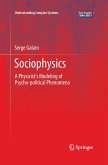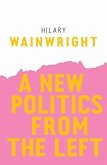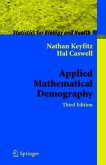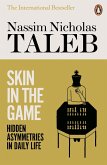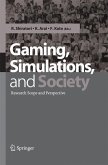Why would anyone bid $3. 25 in an auction where the prize is a single dollar bill? Can one "game" explain the apparent irrationality behind both the arms race of the 1980s and the libretto of Puccini's opera Tosca? How can one calculation suggest the president has 4 percent of the power in the United States federal system while another s- gests that he or she controls 77 percent? Is democracy (in the sense of re?ecting the will of the people) impossible? Questionslikethesequitesurprisinglyprovideaveryniceforumfor some fundamental mathematical activities: symbolic representation and manipulation, model-theoretic analysis, quantitative represen- tionandcalculation,anddeductionasembodiedinthepresentationof mathematical proof as convincing argument. We believe that an ex- sure to aspects of mathematics such as these should be an integral part of a liberal arts education. Our hope is that this book will serve as a text for freshman-sophomore level courses, aimed primarily at students in the humanities and social sciences, that will provide this sort of exposure. A number of colleges and universities already have interdisciplinary freshman seminars where this could take place. Most mathematics texts for nonscience majors try to show that mathematics can be applied to many different disciplines. A student's viii PREFACE interest in a particular application, however, often depends on his or hergeneralinterestintheareainwhichtheapplicationistakingplace. Our experience at Union College and Williams College has been that there is a real advantage in having students enter the course knowing that virtually all the applications will focus on a single discipline-in this case, political science.
From the reviews of the second edition:
"Mathematics and Politics is the fruit of undergraduate mathematics courses taught by the authors. The primary audience is political and social science majors. ... The writing style is appropriate for the intended audience with the understanding that the students/readers have some familiarity with political science economics or sociology. ... Overall the book serves as a useful quantitative introduction to several of the covered topics. ... Faculty in the social sciences should strongly consider Mathematics and Politics as a resource/reference." (J. Douglas Barrett, Technometrics, Vol. 53 (1), February, 2011)
"It is intended to serve as a text for social science and humanities students that will highlight the power and utility of mathematics. ... if you are considering a course as described above, this textbook deserves to be the one that will entice you into taking the plunge. And if you simply want to educate yourself in areas of social science mathematics that have only recently started to get the attention they deserve, Mathematics and Politics deserves your strong consideration." (Edward W. Packel, SIAM Review, Vol. 52 (4), 2010)
"Mathematics and Politics is the fruit of undergraduate mathematics courses taught by the authors. The primary audience is political and social science majors. ... The writing style is appropriate for the intended audience with the understanding that the students/readers have some familiarity with political science economics or sociology. ... Overall the book serves as a useful quantitative introduction to several of the covered topics. ... Faculty in the social sciences should strongly consider Mathematics and Politics as a resource/reference." (J. Douglas Barrett, Technometrics, Vol. 53 (1), February, 2011)
"It is intended to serve as a text for social science and humanities students that will highlight the power and utility of mathematics. ... if you are considering a course as described above, this textbook deserves to be the one that will entice you into taking the plunge. And if you simply want to educate yourself in areas of social science mathematics that have only recently started to get the attention they deserve, Mathematics and Politics deserves your strong consideration." (Edward W. Packel, SIAM Review, Vol. 52 (4), 2010)
This book is well written and has much math of interest. While it is pitched at a non-math audience there is material here that will be new and interesting to the readers... -Sigact News For mathematicians, Taylor's book shows how the social sciences make use of mathematical thinking, in the form of axiomatic systems, and offers a chance to teach this kind of thinking to our students. - The College Mathematics Journal The writing is crisp and the sense of excitement about learning mathematics is seductive. The political conflict examples are well thought out and clear. -Michael C. Munger



